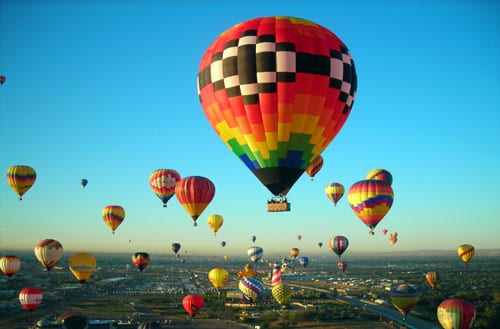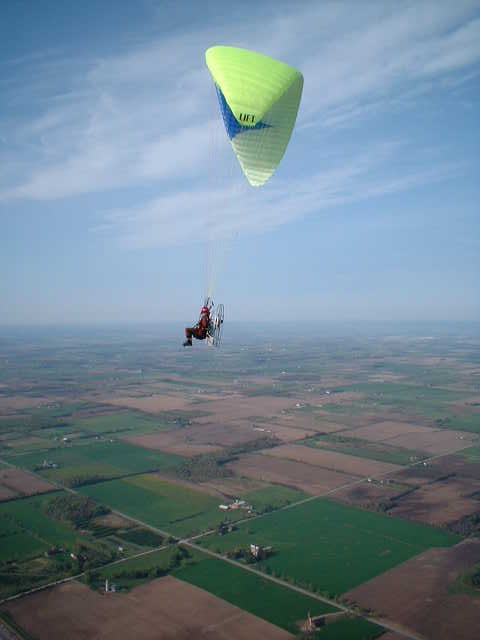
On most mornings throughout the year, commuters driving along Interstate 4 through central Florida are treated to the elegantly bouyant eye candy of a low-speed airshow. Hot air balloons dot the skies for miles, drifting on light winds, and bringing joy to passengers and observers alike.
It’s perfectly natural to be attracted to the sight of a ballon in flight. The original manned flying machine is slow, sluggish, not particularly maneuverable, and brilliant. Kudos to those who fly them and entertain the rest of us in the process.
I’m an airplane guy. Fixed wings are my thing. Over the course of my career I’ve had the chance to fly high wings and low wings, biplanes and monoplanes, pushers and tractors, seaplanes and land planes, single engine and multi-engine machines. I’ve been lucky.

They’ve all been good to me and I’m appreciative of the perspective they offer me on the world.
I’ve logged a few hours in helicopters, too. To be perfectly honest, my efforts at rotorwing operations are pathetic, at best. I’m horrible at it. But then, I’ve never really put all that much effort into flying helicopters.
My experience extends no further than a handful of maintenance flights with qualified pilots beside me, and one particularly memorable jaunt in a Jet Ranger that suggested I could really get into this fling-wing thing if given half a chance.
Those of us who are attracted to aviation tend to specialize. It’s rare to find someone who flies multiple categories of aircraft on a regular basis. It’s not even all that common to find someone who has flown multiple categories at all.
Save for John and Martha King who are certificated to fly pretty much everything from a paper airplane to the space shuttle, and my buddy Jeff who flies transports professionally, a Bonanza for pleasure, an Enstrom helicopter for kicks, and a Powered Paraglider just because he can, most of us stick to the thing we know best. We’re happy in our little aeronautical comfort zone and seldom stray from it.

John & Martha King
I make no judgements on whether that’s a good thing or a bad thing. It’s just a thing. It’s true, and that’s all there is to it.
One of the smallest, lightest flying machines on the scene today is the Powered Paraglider. They are little more than a flexible airfoil made of fabric, tethered to a pilot who is wearing the powerplant and propeller on his, or her, back.

Often referred to as PPGs, I have a vivid memory of the first time I saw one fly. At least, the pilot tried to get it to fly. It was at Paradise City during SUN ‘n FUN in the latter half of the last century.
The pilot jerked his wing into the air, then ran into the wind with great gusto. Unfortunately, the wind was blowing across the runway, not along it. So the pilot headed from one side to the other, toward the thick stand of trees bordering the field.
He ran and he ran, the wing billowing overhead, but never generating enough lift to get his feet off the ground. He ran with determination. He ran with intensity. He ran into the treeline where he came to an abrupt halt, his wing collapsing into the branches around him, as deeply depressed and embarrassed as the pilot himself, I’m sure.
It was an inauspicious start, to be sure. But the PPG end of the market has improved greatly over the years. The powerplants are lighter, the propellers are tremendously efficient, the pilots are more skilled, and the wings are far more capable than the versions that were attached to those early models.
In a couple weeks, the general aviation world will descend on Oshkosh, Wisconsin, as it does every year about this time. AirVenture is afoot. There will be warbirds, classics, seaplanes, transports, and homebuilts…the list goes on and on and on.
But this year, there will be PPGs too. In fact, PPGs will take part in the airshow festivities in a way most of us have never seen before. Half a dozen highly skilled and well practiced PPG pilots, known as The Paradigm Aerobatic Team, will engage in a demonstration of synchronized aerobatics that will simply blow your mind.
Knowing Patty Wagstaff is about to drive into a Lomcevak will tend to turn eyes skyward, even for people who don’t know who Patty is or what a Lomcevak looks like. The precision of it appeals to some. The spectacle is the draw for others.
Well, imagine the sight of a pilot wearing a small engine on his back, with a propeller in a cage attached, hanging beneath what appears to be a slender elliptical parachute. Now imagine that pilot going inverted. Now imagine the pilot going inverted in unison with an entire team of pilots flying the same unusual looking machines. That’s entertainment. It’s an indication of some significant skill and training too.
If you’re at AirVenture this year, you’ll get the chance to be among the first American audiences to see that routine performed at a major airshow. Enjoy it.
Our General Aviation world is bigger and more diverse than even many of its participants know. Yet, if we support each other, cheer for each other, help each other, and believe in our hearts that our brothers and sisters in the air will do the same for us, then general aviation will continue to get stronger, become more diverse, and provide greater enjoyment for all of us.
You have to admit, there’s always something interesting to see and do when you’re at the airport. This year, turn your face skyward and consider the expansion of the market into areas you might have never considered. Revel in the sport of it all. Or get directly involved in something you’ve never tried before.
It’s all there for us if we choose to seize the sky. Let’s do it, in something, somewhere, this year.
Source: http://generalaviationnews.comSeize the sky